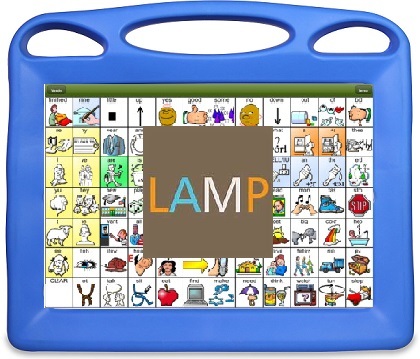Thanksgiving Communication Tools for Kids with Autism
November 16, 2022
November 16, 2022

When many of us think about Thanksgiving, we imagine big, family gatherings filled with turkey-themed tablescapes, pumpkin desserts, oversized sweaters, holiday music and commotion in the kitchen. This scenario can be overwhelming for anyone, but it especially holds true for autism families.
At our autism therapy centers, our team aims to make the holidays a little easier – and tons more fun! – for you and your children. We worked with our speech-language pathologists (SLP) to create a set of communication tools for children with autism spectrum disorder (ASD) to join in Thanksgiving festivities.
No matter what your plans are this Thanksgiving, make the most of it for you and your kiddos. Whether attending a friendsgiving feast or having a quiet yet thankful evening with family and favorite foods at home, this holiday is a perfect opportunity for children to work on communication.
To spark the conversation, we created several visual aids that can be personalized depending on a child’s developmental level. By utilizing these tools, parents and therapists can help their children learn about Thanksgiving while encouraging them to build upon their skills and actively engage with others. Caregivers should choose the materials best suited for their child’s needs.
“Happy Thanksgiving” Wristbands:
These downloadable, easy-to-use wristbands are meant for children who may be nonverbal and instead communicate through gestures or vocalizations, due to symptoms related to autism or a speech delay. Embellished with “Happy Thanksgiving” and themed pictures, adults can print them out and cut along the lines for children to wrap around their wrists. Plain paper works fine, but they can also be laminated for extra support. You can use the included saying, “Happy Thanksgiving!” or write your own message.
The purpose of wristbands is to promote a connection (or “joint attention,” as it’s known in the speech world) with their communication partner. When this child waves at a family member or friend while wearing the special Thanksgiving bracelet, it will serve as their way of communicating, “Happy Thanksgiving!” After the child waves or shows their wristband to someone else, the goal is for others to reinforce the child’s communication attempt by engaging with the child, such as through play, tickling, repeating the phrase or another desired response.
“Using these wristbands may seem like an overly simple concept, but depending on the child, the interaction may not be as easy as it appears,” said SLP Kelly Deakins. “The child may still be learning that adults sometimes control their environment, and in order to play or get what they want, they often need to interact with others.”
We suggest starting out with a fairly basic phrase, like “Happy Thanksgiving,” but if your child is ready for the next step, parents can also incorporate wristbands that focus on choices, such as “yes” and “no.”
Visual Thanksgiving Vocabulary Book:
This printable book – complete with instructions – has a wide range of uses and is beneficial to children whose skills fall along a spectrum of developmental levels.
Nonverbal children can use it to participate in reading simply by matching the pictures. There is also more than one option for those who are verbal or finding their voice. Some children will benefit from being able to put words to meaning. Kids with emergent verbal language can practice increasing phrase length through carrier phrases, whereas children working on expanding their overall vocabulary usage can comment on the various items shown. For those who may have already mastered the early skills, work on complexity. Ask questions like, “Is it yummy turkey or yucky turkey?”
These exercises are great for building communication, but also prepare children for what’s to come. For example, maybe they know how to eat corn, but don’t like the way it looks, so they prefer to skip it. These graphics can ease them into the potentially intimidating spread of food.

Thanksgiving LAMP Words:
Parents whose children use speech-generating devices may be familiar with the LAMP Words for Life application, which is short for Language Acquisition through Motor Planning. This app helps children who are nonverbal communicate their basic needs by pressing certain buttons. Available on a range of tablets, the 80-cell grid includes words that will always appear in the same place for ease of use.
Customization options and the breadth of vocabulary are two of the key advantages of this app. Users just starting out with the app can place fewer icons on the grid, making it much less intimidating. Focus on words like, “eat,” “play,” “all done” and “hungry.” Once a child has those down, they can add on food items after the word, “eat,” such as “turkey,” “potatoes,” and “pie.”
As with all of these tools, adapt the method to whatever works best for your child. For instance, you may decide to work on “eat” and “turkey” in the LAMP app, but “turkey” could still be too difficult for your child, who may instead choose a word like “apple.” That’s ok! Just as autism is a spectrum, so is the manner in which these tools can be utilized.
For children who attend speech therapy or applied behavior analysis (ABA therapy) at Hopebridge, tools like these are not new. Most recently, Kelly designed similar visual guides for Halloween.
“During therapy, there’s a rhyme and reason for everything. Whether our families intended to trick-or-treat in the neighborhood or opted to solely wear costumes around the house, the goals with these sessions were to build familiarity and communication opportunities,” said Kelly. “These holidays and traditions happen every year and are not going to go away, so we try to set them up for success when our kiddos encounter them.”
To put it into action, she asked parents to email photos of the kids’ costumes. She printed them, along with other costume ideas and worked them into visuals they could practice with at the center and at home.
“Halloween is a good way for children to observe their peers and siblings complete the same repetitive sequence of ‘trick-or-treat.’ Even if they don’t choose to dress up, the reciprocal interaction is such a simple and motivating communication routine: I say something, I get something.”
Kelly notes that the Halloween tools provided a fun learning experience for kids in the center. One child whose short-term goal was to achieve 50 words excitedly and immediately announced, “cat cat cat cat, meow!” once she noticed a cat costume on the phrase visual board.
Even if you aren’t leaving the house or inviting others over for the holiday, we suggest families engage in this Thanksgiving interaction with their children. Practice using the wristbands, phrase visuals or LAMP icons throughout November.
For those attending family gatherings, practice with these tools alongside preferred toys at home, then bring them to the Thanksgiving dinner. These comfort items can lead to less anxiety and more willingness to communicate about that toy.
More time is a perk for families who opt to stay home for a quiet supper. The meal can take a little longer as you walk through the steps and phrases. Parents can ask questions like, “Do you want turkey, yes or no?” and “Do you want a small piece or big piece?” Smaller, calmer settings like this allow the extra time to process and communicate about the foods on the table before diving into it. Depending on the developmental level, families may also wish to take the time to talk about the history of the holiday and the traditions associated with it.
The biggest takeaway should be to use these special moments to communicate with your child in whatever format works best for their needs. The interaction – not the process – is what is most important.
We hope parents and children find these tools helpful during the holidays, though we recommend keeping the learning flowing even after Thanksgiving. This is just one of the few tactics blended into Hopebridge’s interdisciplinary 360 Care model* that can assist children and families in gaining more socialization skills and independence. For more information on Hopebridge’s programs, please fill out the online form and someone from our team can walk you through the next steps.
*Informed consent was obtained from the participants in this article. This information should not be captured and reused without express permission from Hopebridge, LLC. Testimonials are solicited as part of an open casting call process for testimonials from former client caregivers. Hopebridge does not permit clinical employees to solicit or use testimonials about therapeutic services received from current clients (Ethics Code for Behavior Analysts 5.07-5.08; BACB, 2020). Hopebridge does not provide any incentives, compensation, or renumeration for testimonials provided by a former client or client caregiver.
Autism Therapy
April 26, 2022
Time for an Occupational Therapy Evaluation? Here’s What to Expect
Parenting Resources
May 23, 2022
When Your Child Needs a Speech Therapy Evaluation, Here’s What You Can Expect
Parenting Resources
December 30, 2024
4 Autism-Friendly Ways to Celebrate New Year’s Eve at Home